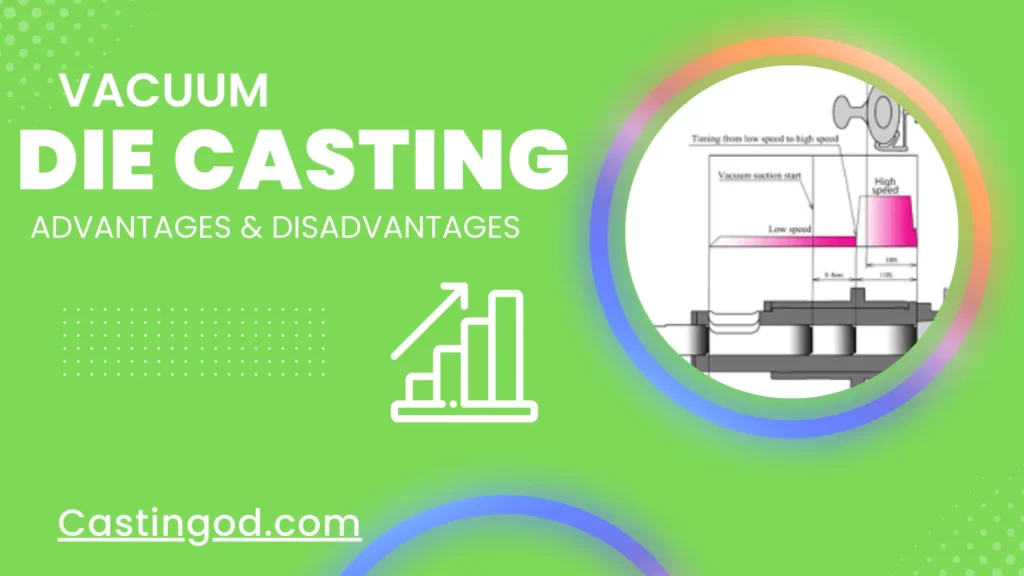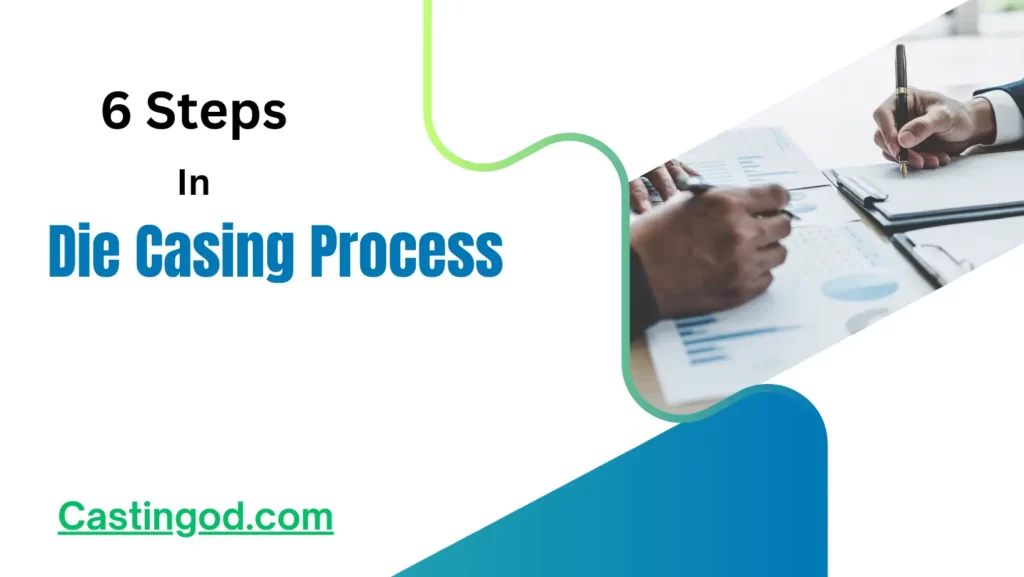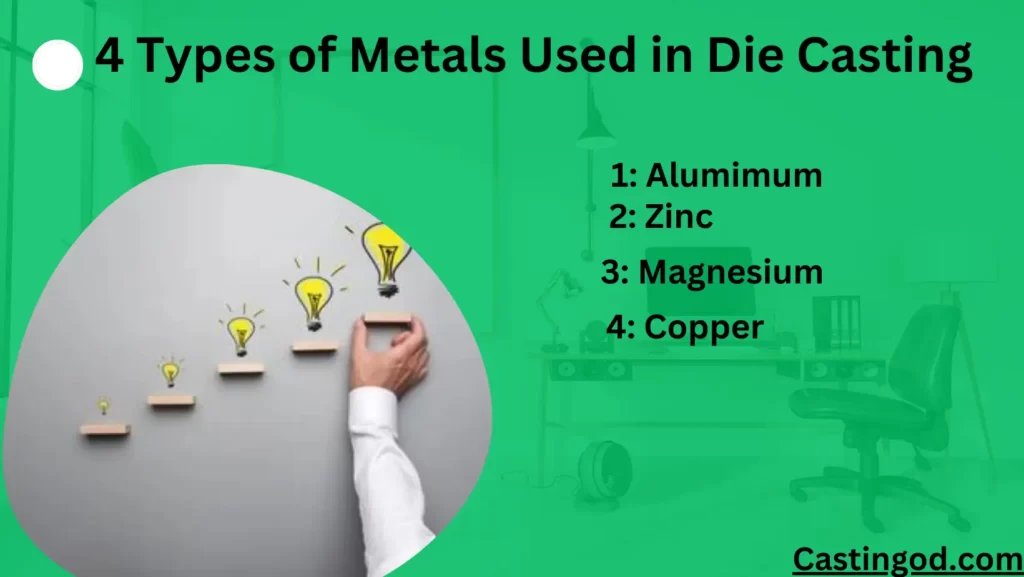Die-casting is an important manufacturing method. It is useful to create final products as well as product parts. Metal casting is a common manufacturing method that uses die casting. There are two primary types of die-casting processes, and there are further process design variations. Die-casting is the process of applying tremendous pressure to molten metal to force it into mold cavities.
Also Read: Best Aluminum For Die Casting
The method works well for the quick production of large metallic parts that only need minor machining after production. The following are some of the primary advantages of die-casting:
High standard: Die-casting produces parts with a long service life.
High reliability: The high uniformity of mass-produced parts
Quick manufacturing: Die-cast tools require very little maintenance.
Versatile design: Die casting can produce almost any size, product geometry, or surface finish.
Minimal assembly: Mold design may include assembly elements like studs, drill holes, and bosses.
Do you want to know more about all types of die-casting? I’ll provide you with all the information you need regarding die-casting.
What Are the Different Types of Die Casting?
Die-casting machines come in three different types. There are three types of die casting: hot chambers, cold chambers, and vacuum chambers. They are distinctive and have a wide range of applications.
Hot Chamber Die Casting
Machines for hot chamber die casting are often known as gooseneck machines. Metals with low melting points are the best candidates for them. For example, alloys made of zinc, magnesium, and lead. In a furnace connected to the hot chamber die-casting machine, the above metals are heated and melted. They are then directly inserted through goosenecks into the die.
The casting chamber’s continuous contact with the liquid alloy is a defining characteristic of hot chamber die-casting machines. Through a valve, molten metal is brought to the casting chamber, where a piston rapidly drives it into the closed die-casting mold.
Advantages
Die casting in a hot chamber offers a number of advantages. Some important advantages include:
- Assurance of a high output rate, especially when using multi-cavity dies
- Shorter time between production cycles.
- The simplicity of melting the metal in a casting machine
- Improved output and surface quality.
- The dimensions have very tight tolerances.
- The creation of intricate shapes with thin walls
- A longer lifespan is assured by the lower melting temperatures of metal components.
Disadvantages
Hot chamber die casting still has several restrictions despite its benefits. They consist of:
- The only acceptable metals are those with low melting points. This is due to the casting machine’s components constantly coming into contact with molten metal.
- It works well for castings that are under 4.5 kg in weight.
Cold Chamber Die Casting
Cold chamber die-casting machines function with the casting set separate from the furnace where the metal material is melted. High melting point metals are best suited for this equipment. Aluminum, copper, and brass alloys are a few examples.
The first step in the procedure is melting the metal in an external furnace. The metal is then poured through a pouring hole into a shot chamber, which includes a ram that directs the molten metal into the die.
When the metal has been poured into the die and has had time to solidify under intense pressure, you can next open the die’s latches to release the casting, along with the gate and any extra metal that has built up.
Advantages
- Cold chamber die casting allows you to create big components up to 20 kg in weight.
- It is used to cast metals with high melting points, such as alloys of zinc, aluminum, copper, and brass.
- Cold chamber die casting makes it simple to create metal components with complex geometries.
Disadvantages
- The cycle time is longer as compared to hot chamber die casting.
- The molten metal must be poured into the casting chamber using an auxiliary system.
Vacuum Die Casting

Vacuum die casting is a type of high-pressure die casting that uses a vacuum pump to remove air stored within the die chamber.
Both hot-chamber and cold-chamber die casting can be done using vacuum die-casting.
Vacuum die-casting machines use the same procedures as other types of die-casting machines, with the exception that a vacuum is created throughout this procedure.
Also Read: Top Aluminum Die Casting Companies In USA
The following are the main steps in vacuum die casting:
The metal will be melted. You will need a separate furnace to melt the metal alloy if you’re using a cold chamber machine. The metal alloy will be melted by the machine if you use a hot chamber machine.
Enter the shot chamber with the molten metal. For this purpose, a plunger is used in hot chamber machines, whereas a ladle is used in cold chamber machines.
Then, a vacuum is produced, and metal injection will be done under high pressure.
The air in the die cavity will be removed, enabling the uniform distribution of molten metal over the whole die.
Advantages
- Making metal parts of greater quality.
- It minimizes surface imperfections
Disadvantages
- It is costly.
6 Steps in The Die Casting Process?

Die-casting processes differ according to the manufacturer’s preferences. These are the six main processes that manufacturers perform in the die-casting process.
1: Die preparation
First, the die must be ready for casting. It is sprayed with a lubricant to do this. This is done to ensure a smooth release when the metal portion has been entirely cast.
2: Clamping
Apply strong pressure when clamping the die halves together. The machine decides how much force needs to be applied.
3: Injection
High pressure is used to pour the melted metal alloy into the clamped die. The molten metal is kept in the die until it cools because of the high pressure. The intricate nature of the metal parts, including their wall thickness, variety of patterns, and internal caverns, affects the injection time.
4: Cooling
Metals that have been put into the die while still molten begin to cool. The duration of this process depends on the type of metal used, the temperature, the intricacy, and the wall thickness of the metal components. The die cannot be unclamped while cooling is taking place. Finally, cooling will cause the metal to assume the die’s shape.
5: Ejection
The die halves are released after the metal portions have completely cooled, and an ejection mechanism extracts the molded metal components. To avoid damage, watch the amount of force required to remove the metal components.
6: Trimming
This completes the die-casting process. Sometimes, there is extra metal material in the sprue and runner when the metal materials cool. They must be taken out, along with any spark that has happened. The excess pieces that stick to the finished casting are cut off, recycled, and used again throughout the die-casting process.
4 Types of Metals Used in Die Casting?

Die casting can be done with a wide range of metals. The commonly used metals are:
Aluminum: It is the most popular metal used in die casting. It is incredibly thermally efficient, lightweight, and simple to machine.
Zinc: Zinc is often used in the production of die-casting. It is renowned for its superb surface quality and capacity to make highly precise pieces.
Magnesium: Magnesium is a thin, lightweight metal that is frequently used to make automotive components. It has great strength-to-weight ratios.
Copper: It is a high-conductivity metal. It is used to make electrical components. It is corrosion-resistant and has great thermal conductivity.
What Are the Advantages of Die Casting?
Die casting has many advantages, such as:
High-Grade Parts: Die casting is renowned for its capacity to create precise, high-quality parts. The procedure creates items with superb dimensional accuracy and a flawless surface finish.
Cost-effective: Die casting is a cheap manufacturing method. It is the best process for creating large quantities of parts due to its high production rate and cheap labor costs.
Versatility: Die casting is used to create components of different sizes and shapes. The method may create components with thin walls, delicate features, and complicated shapes.
Durability: Die-cast components are renowned for their resilience and power. The production of robust, weather-resistant parts is ensured by the use of premium metals and a high-pressure casting method.
Conclusion
Die-casting is a manufacturing method that offers a number of advantages. It is a cost-effective, excellent-volume method that creates parts that are reliable and of good quality. Die-casting is a flexible method and can be used to create parts of different sizes and shapes. It is a very useful technique for producing a variety of complex parts.
Which die caster is best in USA?

Consider Castingod for die cast aluminum parts. If you are looking best aluminum die casting manufacturer near me, we provide custom metal parts in bulk.








